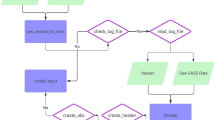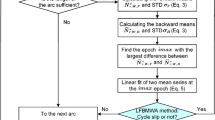Abstract
The Quasi-Zenith Satellite System (QZSS) service area covers East Asia and Oceania region and its platform is multi-constellation GNSS. The QZSS system is not required to work in a stand-alone mode, but together with data from other GNSS satellites. QZSS data is processed and analysed for single receiver together with GPS/BDS data in the paper. Single point positioning mode, static precise point positioning mode and kinematic precise point positioning mode are used to assess the impact of QZSS on GPS/BDS single receiver positioning. The data corresponding to the day 2015-02-05 taken from the IGS station of CUT0 is considered. The sky plots and number of satellite for the various satellite systems are given. The PDOP (Position Dilution of Precision) value, position error and solution success rate under different cut-off elevation angles are compared between GPS/BDS and GPS/BDS/QZSS. The results indicate that QZSS is able to decrease the position error and increase success rate of resolution for GPS/BDS single receiver positioning, especially under high cut-off elevation angle. The availability and accuracy of GPS/BDS positioning are improved using QZSS for single receiver.








Similar content being viewed by others
References
Abdel-salam MA (2005) Precise point positioning using un-differenced code and carrier phase observations. The University of Calgary
Choy S, Harima K, Li Y, Wakabayashi Y, Tateshita H, Kogure S, Rizos C (2013) Real-time precise point positioning utilising the Japanese Quasi-Zenith Satellite System (QZSS) LEX corrections. In: International Global Navigation Satellite Systems Society IGNSS Symposium 2013, Outrigger Gold Coast, Qld Australia, July 16–18
Du S (2010) Integration of precise point positioning and low cost MEMS IMU. The University of Calgary
Harima K, Choy S, Wakabayashi Y, Kogure S, Rizos C (2014) Transmission of augmentation messages for precise point positioning utilizing Japanese QZSS LEX signal. In: Proceedings of the 27th International technical meeting of the ION satellite division, ION GNSS + 2014, Tampa, Florida, September 8–12
Hauschild A, Steigenberge P, Rodriguez-Solano C (2012) Signal, orbit and attitude analysis of Japan’s first QZSS satellite Michibiki. GPS Solut 16:127–133
Hsu L, Gu Y, Kamijo S (2015) 3D building model-based pedestrian positioning method using GPS/GLONASS/QZSS and its reliability calculation. GPS Solut. doi:10.1007/s10291-015-0451-7
Iwabuchi T, Rocken C, Wada A, Kanzaki M (2013) Benefit of multi GNSS processing with GPS,GLONASS, and QZSS for tropospheric monitoring. In: Proceedings of the 26th international technical meeting of the ION satellite division, ION GNSS + 2013, Nashville, Tennessee, September 16–20
Kitamura M, Ota T, Amano Y (2014) Improving availability and accuracy of multi-GNSS positioning using QZSS. In: Proceedings of the 27th international technical meeting of the ION satellite division, ION GNSS + 2014, Tampa, Florida, September 8–12
Landau H, Glocker M, Kipka A, Leandro R, Nitschke M, Stolz R, Zhang F (2012) Aspects of using the QZSS satellite in the Trimble CenterPoint™ RTX™ service: QZSS orbit and clock accuracy, RTX positioning performance improvements. In: 25th International technical meeting of the satellite division of the institute of navigation, Nashville TN, September 17–21
Li Y, Rizos C (2011) Evaluation of positioning accuracy of GNSS with QZSS augmentation. In: International global navigation satellite systems society IGNSS symposium 2011, Sydney, NSW, Australia, November 15–17
Li Z, Wang J, Li B, Gao J, Tan X (2014) GPS/INS/Odometer integrated system using fuzzy neural network for land vehicle navigation applications. J Navig 67:967–983
Liu C, Lin P, Zhao X, Gao J (2015) Reducing GPS carrier phase errors in the measurement and position domains for short-distance static relative positioning. Acta Geod Geophys. doi:10.1007/s40328-015-0111-y
Lukes Z et al. (2013) Network RTK computing in the cloud and the importance of using GLONASS and QZSS. In: Proceedings of the 26th International technical Meeting of the ION Satellite Division, ION GNSS + 2013, Nashville, Tennessee, September 16–20
Nadarajah N, Teunieesn PJG (2014) Instantaneous GPS/Galileo/QZSS/SBAS attitude determination: a single-frequency (L1/E1) robustness analysis under constrained environments. Navigation-US 61:65–75
Nadarajah N, Khodabandeh A, Teunissen PJG (2015) Assessing the IRNSS L5-signal in combination with GPS, Galileo, and QZSS L5/E5a-signals for positioning and navigation. GPS Solut. doi:10.1007/s10291-015-0450-8
Odolinski R, Teunissen PJG, Odijk D (2014) Combined GPS + BDS + Galileo + QZSS for long baseline RTK positioning. In: Proceedings of the 27th International Technical Meeting of the ION Satellite Division, ION GNSS + 2014, Tampa, Florida, September 8-12
Odolinski R, Teunissen PJG, Odijk D (2015) Combined BDS Galileo, QZSS and GPS single-frequency RTK. GPS Solut 19:151–163
Su X, Zhan X, Niu M, Zhang Y (2014) Receiver autonomous integrity monitoring (RAIM) performances of combined GPS/BeiDou/QZSS in urban canyon. IEEJ T Electr Electr 9:275–281
Wu F, Kubo N, Yasuda A (2004) Performance analysis of GPS augmentation using Japanese quasi-zenith satellite system. Earth Planets Space 56:25–37
Yamada H, Fujita S, Saitoh S, Sakai T, Ito K (2012) Real-time simulation of QZSS regional satellite navigation. In: 25th International Technical meeting of the satellite division of the institute of navigation, Nashville TN, September 17–21
Yoo BK, Sung S, Lee E, Lee S, Kim J, Lee H-J, Lee YJ (2009) Availability assessment of GPS augmentation system using geostationary gatellite and QZSS in seoul urban area. Japan Soc Aeronaut Space Sci 52:152–158
Acknowledgments
The work is partially sponsored by the Fundamental Research Funds for the Central Universities (Grant Number: 2014ZDPY29) and partially sponsored by A Project Funded by the Priority Academic Program Development of Jiangsu Higher Education Institutions (Grant Number: SZBF2011-6-B35).
Author information
Authors and Affiliations
Corresponding author
Rights and permissions
About this article
Cite this article
Li, Z., Chen, F. Improving availability and accuracy of GPS/BDS positioning using QZSS for single receiver. Acta Geod Geophys 52, 95–109 (2017). https://doi.org/10.1007/s40328-016-0167-3
Received:
Accepted:
Published:
Issue Date:
DOI: https://doi.org/10.1007/s40328-016-0167-3




